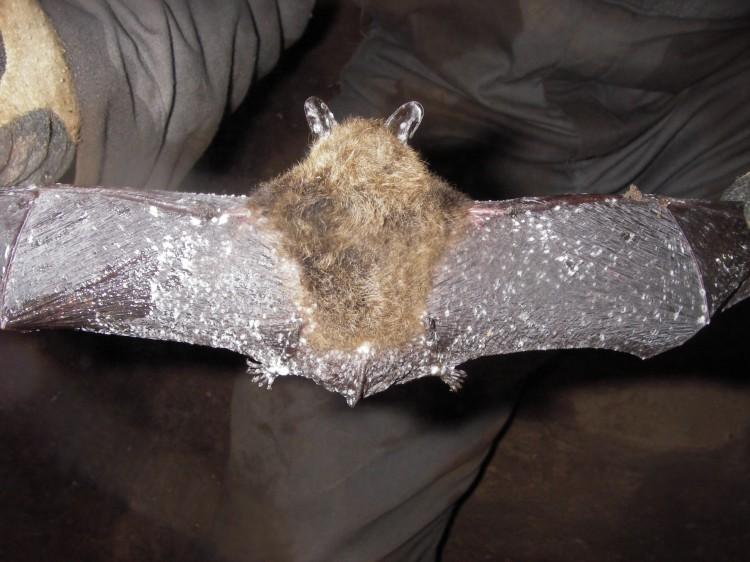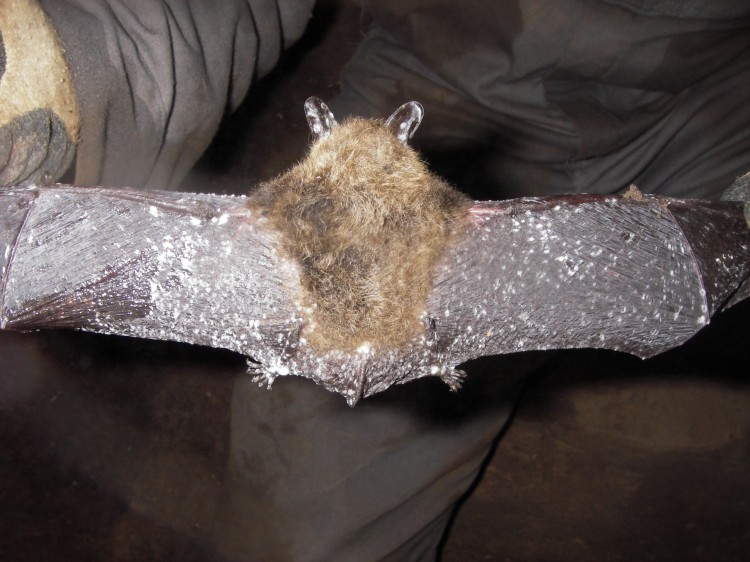A scientist in New Brunswick is sounding the alarm over a deadly fungus that is severely impacting bat populations in the province and could spread across the country.
During an inspection of the bats’ winter hibernation sites in recent weeks, Donald McAlpine, research curator of zoology at the New Brunswick Museum, found that the disease-causing fungus known as white-nose syndrome (WNS) has spread to three new sites.
This is despite the fact that it is still early in the hibernation season and WNS often doesn’t become evident until later in the winter.
McAlpine says the quick spread of the highly contagious disease is worrying and doesn’t bode well.
“There’s great concern that eventually [WNS] will make its way to Western Canada. There’s a very diverse bat fauna in B.C. and other parts of Western North America, so there’s plenty of concern there.”
White-nose syndrome has been decimating bat populations across eastern North America for the past five years, with mortality rates reaching 100 percent at many sites.
U.S. Fish and Wildlife Service biologists and partners estimate that between 5.7 million and 6.7 million bats have now died from the disease.
First documented in New York in 2006, WNS is thought to have originated in Europe and been brought to North America by humans. It has spread quickly to 16 U.S. states as well as New Brunswick, Nova Scotia, Quebec, and Ontario.
The disease appeared in Ontario and Quebec in 2009 but McAlpine made the first Maritime discovery in New Brunswick in March 2011. The one infected site he found housed the largest concentration of hibernating bats in New Brunswick. Of the estimated 6,000 bats in the cave, 90 percent had died.
“It appears that the major vector of the disease are bats themselves, but [we’re] certainly concerned about people spreading the disease,” he says.
Bats with WNS exhibit unusual behaviour during the winter months, including flying outside during daytime and clustering near the entrances of caves and mines where they hibernate.
Loss to Agriculture
McAlpine says the decline in bat populations is particularly concerning because they prey on many pests that attack plants and crops.
“They play much the same role at night as a lot of the insect-eating birds do during the day,” he says.
Bats eat about one-third to one-half of their body weight in insects every night. With over five million dead, lost crop productivity and increased need for insecticides could prove to be costly.
U.S. researchers have estimated that the bat die-off will cost North American agriculture $3.7 billion annually.






